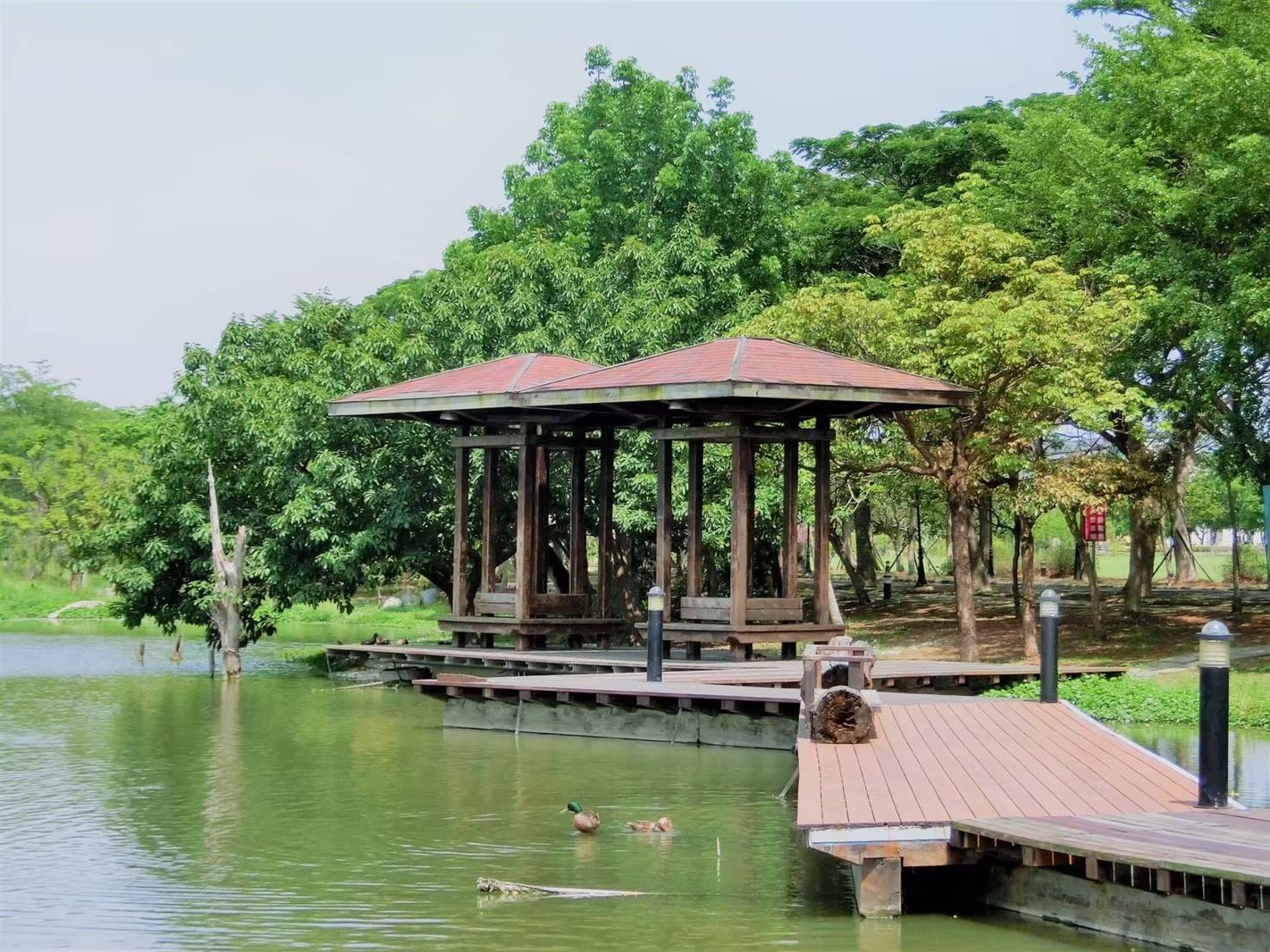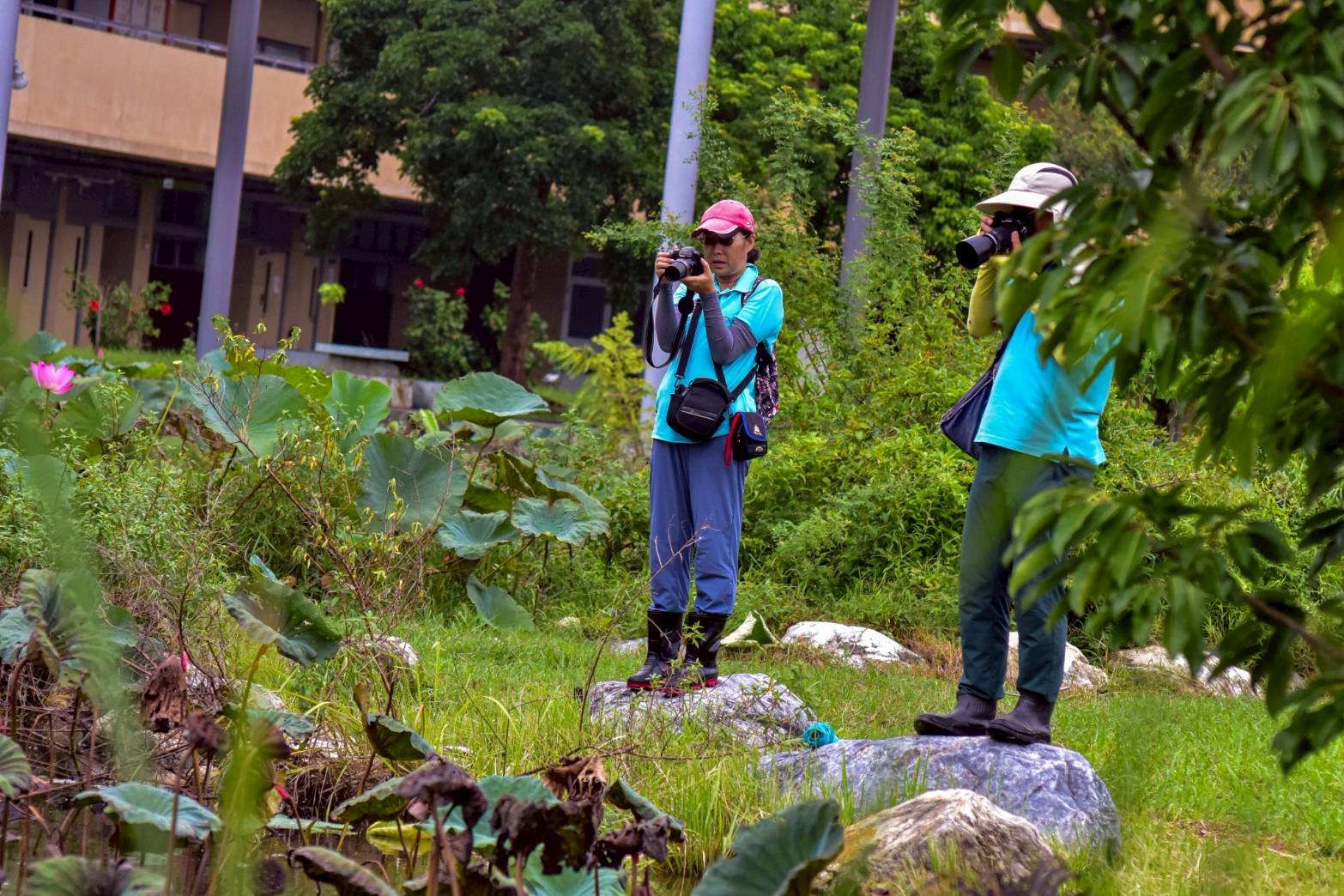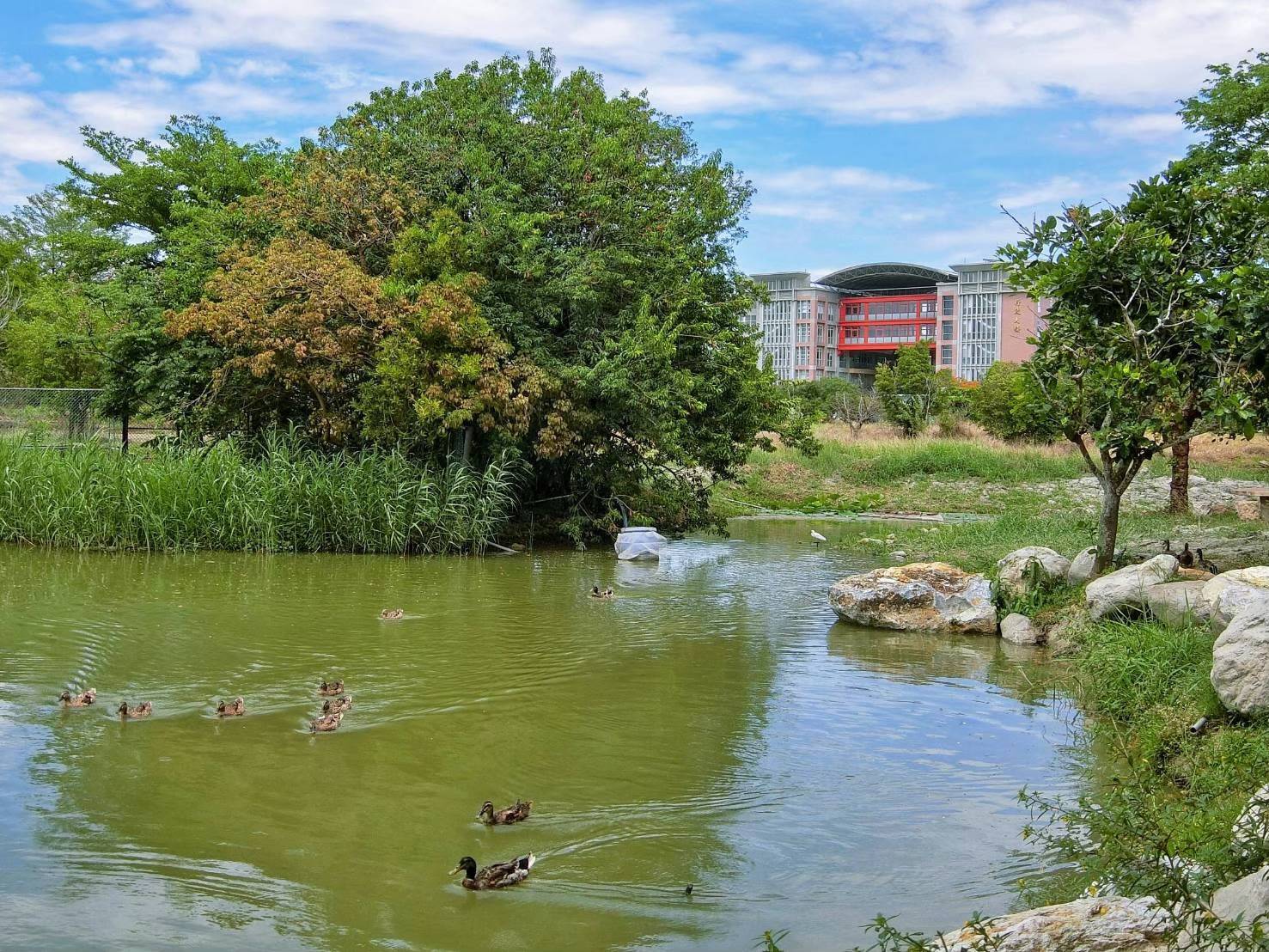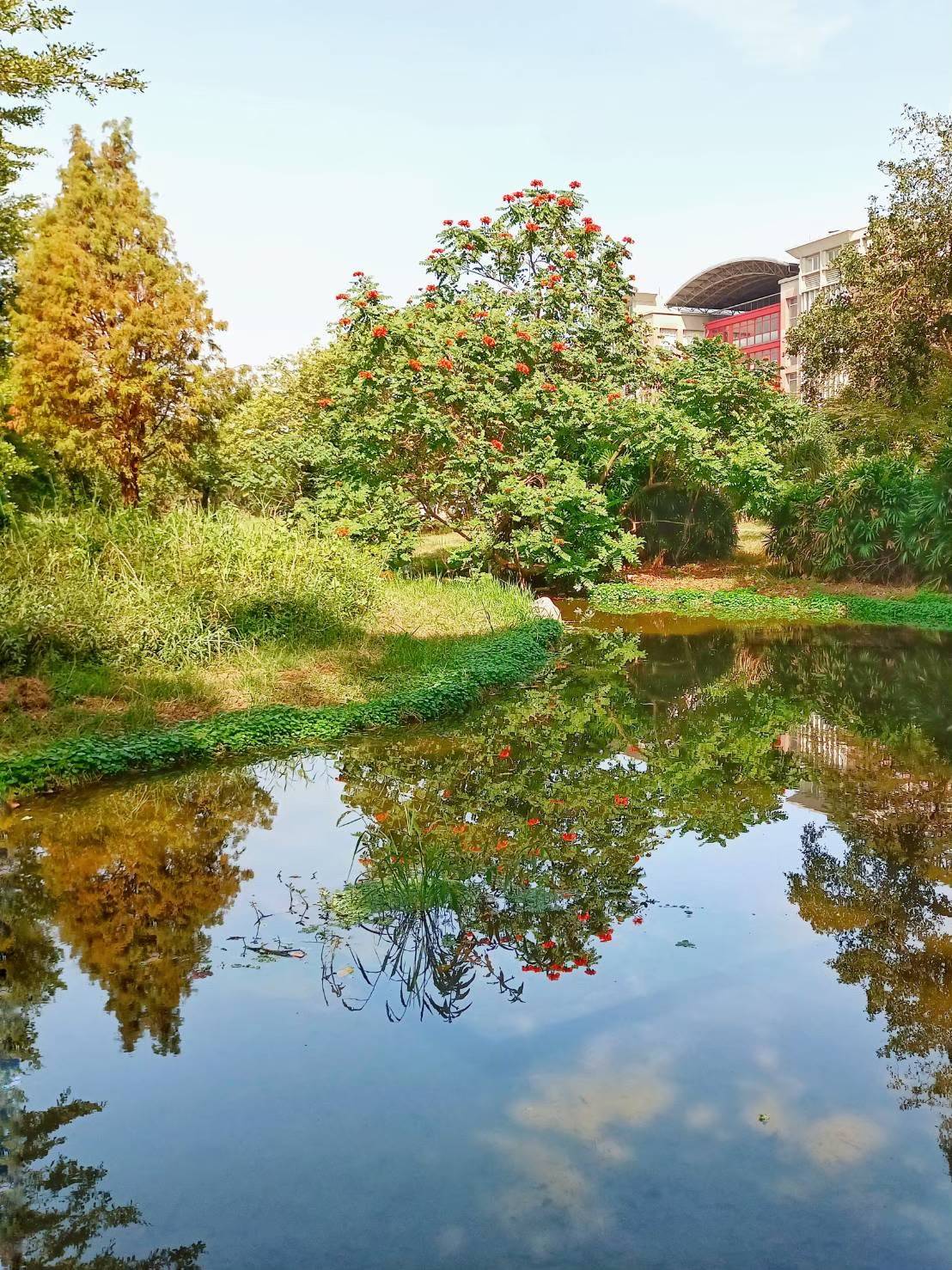Ecological Waterway

The university campus, once a mix of fishponds and farmland, was transformed in 1999 with support from the Construction and Planning Agency, launching the Waterfront Open Space Project that introduced ecological design concepts. The area’s water system relies on rainwater and reclaimed water from the campus treatment plant, creating a dynamic flow that enhances groundwater retention and supports ecological functions.
Completed in 2002, the ecological lake and river channel adopted multiple eco-engineering methods—such as gravel slopes, log revetments, and vegetated banks—to provide habitats for aquatic life and diverse waterfront landscapes. Together with the adjoining subtropical broadleaf forest, they form the campus’s ecological core. The area now supports a variety of species, from moorhens and kingfishers to herons and mallards, reflecting a balanced and thriving ecosystem. While the surface ecology has flourished, challenges remain below the water, where unregulated fish releases and overfeeding have disrupted species balance, highlighting the need for continued ecological management.


